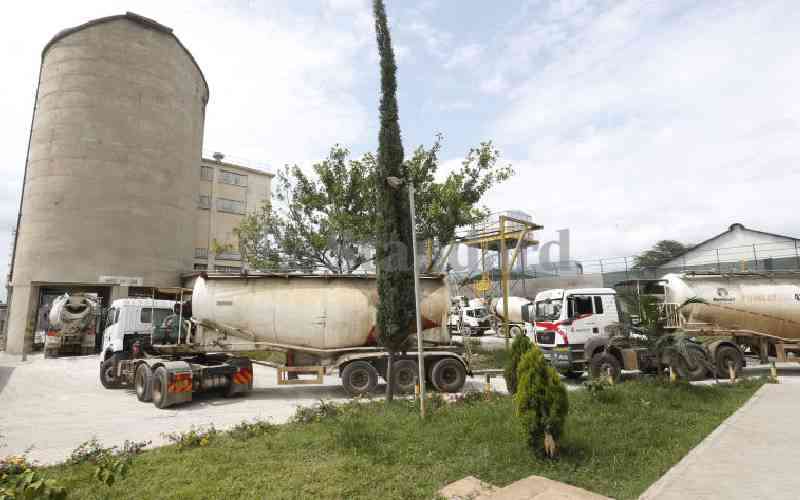By Kipchumba Kemei
Conservationists are worried about the decline in the population of common bird species in the Mau Forest.
The Kenya Wildlife Service (KWS) and the World Wide Fund for Nature (WWF) are among conservation players who have detected the threat.
They warn that about 100,000 different species of birds are either killed annually to be used in cultural practices, which have refused to die over time or for commercial poaching of their colourful plumage.
They also warn that habitat loss, which includes deforestation because of settlements, forest fires that burn bird nests and use of pesticide in underlying farming zones neighbouring the forest will decimate the Mau bird population.
Kill tourism
The decline in the species, comprising some of the rarest in the world, could kill the multi-million shilling bird watching tourism industry.
"Birds are an important component of the eco-system because they play an important role in maintenance of the biodiversity. They are as important as any other wildlife," says Tuqa Jirmo, a senior KWS official in charge of security operations in the 400,000-hectare Mau forest.
 |
Initiates display headgear made using feathers. |
He says the annual cultural practices where youths destined for initiation, from communities neighbouring the expansive forest, are supposed to kill different species of birds to prove their hunting prowess have greatly contributed to the decline in the annual bird count.
The cultural practices is common among the Masai, Kipsigis, Ogiek and other communities neighbouring forests and water catchment areas of the Rift Valley Province.
"Every year about 4,000 initiates kill an average of 20 birds each before for initiation. This is a grim reality to the survival of birds in Mau Forest and Masai Mara Game Reserve," he says.
Jirmo who is also the Service Warden in charge of the larger Narok, adds that the huge loss of different species of birds bodes ill for conservation efforts and for nature tourism, saying it is working against bird watching tourism prospects in Kenya and Tanzania.
"Some of the birds targeted migrate all the way from Europe to feed and breed here away from the harsh winter conditions. It is an act that is aiding the killing of ornithological safaris where tourists who love bird watching come annually," he adds.
Studies show that Mau is not only an important water tower in East Africa, but also a centre for biodiversity for many endangered species of mammals and reptiles.
Enlighten youths
In the face of the factors causing the disappearance of important bird and wildlife species, KWS has launched a conservation and education programme to enlighten local youths on the importance of birds in the forest biodiversity.
"We are convinced that the rate at which we are losing different species of birds and total decline in the number of different species of birds is worrying," says Jirmo.  |
One of the rare bird species in the Mau Forest. |
Kenya, he says is leading in Africa in the diversity of birds and Mau is an internationally recognised Important Bird Area where threatened species can still be found in plenty.
KWS is using public awareness campaigns in the Mau and Mara regions to educate local youths that birds are important in the ecosystem because they are the environmental indicators of a clean and healthy environment.
They are also good crop pollinators and have socio-cultural significance, the youths are told in a campaign that also involves the local administration.
The WWF agrees that certain wildlife species including birds, apart from scavengers, face extinction because of human activities in their habitats.
"Studies we have carried out over the years have shown that unchecked human activities in the Mau zone has greatly contributed to the disappearance and death of certain species of wild animals in the larger Mara-Serengeti ecosystems," says Doris Ombara-Okundi, the manager of the Mara River Basin Initiative.
Big decline
In the last three years, according the Kenya Tourism Board estimates, 1.6 million tourists visited the country. The upward trend was dealt a blow by the December 2007-2008 post-election violence.
Recent studies by KWS in conjunction with the National Museums of Kenya identified only 132 bird species in the Mau and out of these, considered a big decline for the forest. Five species are considered scarce and two rare.
"Some species of birds are Afro-tropical migratory, illustrating that some species are rated as vulnerable while others are regionally endemic. All these are major reasons why their habitats should be protected within the existing legislative framework," Jirmo says.
"The initiates and their handlers should have minimum knowledge of conservation efforts within existing laws," says Jirmo.
The conservationist says although all birds are protected under local wildlife laws and international conventions, weak punishment for culprits has not deterred killing of the birds.
A consortium studies carried in December last year by KWS, National Museums, Kenya Forest Working Group, the Green Belt Movement Ewaso-Nyiro South Development Authority at Olokurto, Olpusimoru, Loitas forest,Olkirkirai, Nkareta and other areas bordering the controversial water catchment area showed that Mau forest is a critical habitat for most birds species.
Most bird species and mammals, the studies showed are forest dependants for feeding, breeding and cover.
Last year, the Spanish Government donated a 31 month rehabilitation programme for Mau forest which would have involved communities in the event through setting up of subsidized programmes aimed at enlisting of their support.
Ewaso Nyiro South Development Authority managing director Francis Nkako says the programme will go on in spite of new settlements in the larger Mau, which has given room for charcoal burning and logging, courtesy of Government divided attention towards efforts to save the water catchment zone.
 The Standard Group Plc is a multi-media organization with investments in media
platforms spanning newspaper print operations, television, radio broadcasting,
digital and online services. The Standard Group is recognized as a leading
multi-media house in Kenya with a key influence in matters of national and
international interest.
The Standard Group Plc is a multi-media organization with investments in media
platforms spanning newspaper print operations, television, radio broadcasting,
digital and online services. The Standard Group is recognized as a leading
multi-media house in Kenya with a key influence in matters of national and
international interest.
 The Standard Group Plc is a multi-media organization with investments in media
platforms spanning newspaper print operations, television, radio broadcasting,
digital and online services. The Standard Group is recognized as a leading
multi-media house in Kenya with a key influence in matters of national and
international interest.
The Standard Group Plc is a multi-media organization with investments in media
platforms spanning newspaper print operations, television, radio broadcasting,
digital and online services. The Standard Group is recognized as a leading
multi-media house in Kenya with a key influence in matters of national and
international interest.











